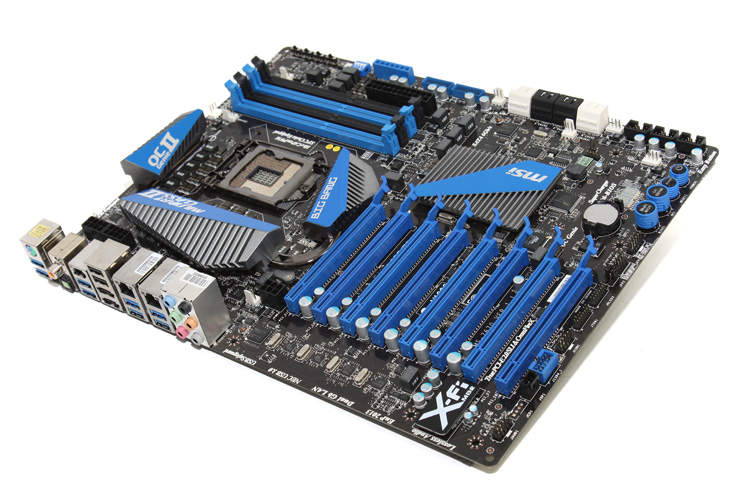EFI BIOS (MSI CLICK BIOS)
EFI BIOS (MSI CLICK BIOS)
Before we dice deep into the hardware with the help of a photo-shoot, I quickly wanted to show you the BIOS. We touched the topic at the previous page already, the new EFI BIOS is an Extensible Firmware Interface that complies with EFI architecture, offering a user-friendly interface that goes beyond traditional keyboard-only BIOS controls to enable a way more flexible and convenient mouse input at BIOS level.
EFI (Unified Extensible Firmware Interface) is a specification detailing an interface that helps hand off control of the system for the pre-boot environment (i.e. after the system is powered on, but before the operating system starts) to an operating system, such as Windows.
EFI is an interface. It can be implemented on top of a traditional BIOS (in which case it supplants the traditional "INT" entry points into BIOS) or on top of non-BIOS implementations.
End-users can navigate the new EFI BIOS (basic input/output system) with the same smoothness as their operating system. It's simply a Windows OS feel. The EFI mode displays frequently-accessed setup info, experienced performance enthusiasts that demand far more intricate system settings and you can go nuts in there.
We have recorded a little video on the new EFI BIOS feature, and yes it is as impressive as it looks. The MSI EFI Click BIOS implementation however lacks a bit of creativity as it simply does not grasp me. It's setup is somewhat illogical, you constantly have to seek, it is also somewhat unresponsive and even buggy here and there as sometimes a mouse click on a register or function simply does not work.
Yeah there still lots of improvements to be made on MSI's side alright, but it's better then your regular BIOS of course as it makes common functions really fail proof, features like flashing a BIOS is done in a jiffy and all variables can be managed and monitored really easy. We'll see a lot of ODMs make a move to the EFI BIOS this year.
Specifications
| Socket | 1155 |
|---|---|
| CPU (Max Support) | Sandy Bridge |
| Base Clock | 100MHz |
| Chipset | Intel P67 |
| DDR3 Memory | DDR3 1066/1333/1600*/2133*(OC) |
| Memory Channel | Dual |
| DIMM Slots | 4 |
| Max Memory (GB) | 32 |
| PCI-Ex16 | 8 |
| PCI-E Gen | Gen2 (1x16, 1x8) |
| PCI | 2 |
| IDE | N/A |
| SATAIII | 4 |
| SATAII | 6 |
| RAID | 0/1/5/10 |
| LAN | 10/100/1000*2 |
| USB 3.0 ports (Rear) | 8 |
| USB 2.0 ports (Rear) | 2 |
| Audio ports (Rear) | 6+Coaxial/Optical SPDIF |
| 1394 ports (Rear) | 1 |
| eSATA | 2 |
| Form Factor | eATX |
| DrMOS | Y |
| APS | Y |
| SLI | Y |
| CrossFire | Y |
Alright, let's head onwards to an overview of the motherboard with the help of a photo-shoot.

